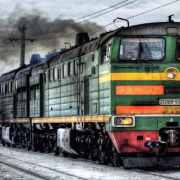Russia is trying to save what cannot be saved
/0 Comments/in Long Articles/by Rudolf HuberI love quotes and of all quotes, those from Nicollo Machiavelli rank among my favorites. There is hardly any subject I can write about that would not find a fitting quote from the man.
“For the initiator has the enmity of all who would profit by the preservation of the old system and merely lukewarm defenders in those who would gain by the new one.” – Nicollo Machiavelli
Sometimes one faces impossible odds. A situation that is so impossible to solve that the mere attempt should be discouraged. But then again, the history of humanity is a continuous battle against the odds. And where would we stand today if there were no courageous humans from time to time that spit the odds in the face and did it anyhow?
But for every single success, there is an army of corpses. Impossible odds are impossible for a reason. Often enough, it’s not a lack of imagination. Often there are better alternatives than whatever one seeks to establish.
And sometimes, an old mistake of the past needs to be acknowledged for what it is. Thats the change, the innovation that seeks to emerge. But when the mistake has taken deep roots, it’s as hard to unmake as changing the status quo positively would have been.
I am pretty known for some unconventional opinions about North Stream 2. I have long argued that both North Stream pipelines are a good thing for LNG. They increase gas availability in the European market. Hence they allow LNG suppliers to use North-Western Europe as a flexibility option.
I also often argued that the pipeline makes no economic sense overall. The cost of transporting gas from Russias Western Siberian regions to Europe is already crushing. Offshore pipelines are typically more expensive to build and operate than onshore pipelines so that adds a poison pill on top.
So, what are those high profile pipeline projects North Stream 2 and also Turk Stream then? A couple of years ago I had an on-stage discussion during an event. The issue was raised and I called those pipeline projects solutions to problems that cannot be solved.
Let me explain. When Russia started to exert dominance over their near abroad again after the collapse of the Soviet Union, it was only a question of time until resentment against this domination would emerge. Especially countries like Poland and the Baltic Republics could reasonably be expected to push back against the Russian bear’s embrace.
But, it is Ukraine that holds a very special position in the group of countries that are now independent of Russia but well within its sphere of domination.
Some of those countries have instantly become transit countries for oil and gas pipelines on independence. Those pipelines were once running on Soviet and also COMECON territory for most of its length. In Ukraine’s case, huge underground gas storage added a massive buffer for the modulation of the European seasonal gas demand swing. This enabled a certain decoupling of the gas supply profile from the demand profile.
Tensions in the post-Soviet Union arrangements were patched over for many years. But when Ukraine started to exert real independence from Russia, it all snapped.
Lets now look at Russia’s legacy gas pipeline system. The gas mainly originates in Western Siberia from two fields and some smaller ones around. Those fields and the first strings of pipelines had been developed pretty soon after the end of WW2.
When they were built, project economics as we use them in the developed world did not matter. It was the Soviet Union after all and the decision to build or not to build depended on politics, not on economics.
I have long argued that if those gas fields would have been located in a democratic, capitalist Russia, they would have never been developed. Their cost of development never justified the revenues they would accrue. Now thats, of course, only a theory of mine.
What’s the problem for Russia now? Selling gas to Western Europe through this pipeline system from the Sixties onwards earned Russia quite a lot of money. It also gave them geopolitical clout. Russia has inherited those arrangements plus the gas fields and the pipeline system as a gift from the Soviet Union after 1991. It came for free as the cost and effort of developing and building those fields and pipelines dissolved into the ether. The insolvency procedure of the Soviet Union cleaned those costs out.
From then on it was all profits, a little bit of OPEX and no CAPEX to cover anymore. Sweet. Russia took it all and started to make easy money. But once you are used to “easy cash” and also the political clout that comes with it though, you don’t want to give that up.
If Russians would have put a time value on those incomes and kept a mental note in the back of their minds that one day it’s all over, they would have been fine. But who does that?
The problem is that gas fields have a shelf life. At some point in time, they are spent (depleted) and are either replaced with new fields or this particular export venture stops cold.
Russia has, of course, many more new fields to drill into and to develop. But those fields are even harder to develop than the original ones. Hence they are way more expensive which ergo leads to even worse economics than the original fields at the moment of development. Technological progress helps somewhat but it’s no magic wand.
But today, Russia cannot use Soviet-Union-style economics to make those impossible fields work. Those developments cost what they cost and the locations of the fields have not become any better since then.
The sage decision would have been to produce as much gas as they can from the older fields and call it a day when they are depleted. Any new field required new upstream, new pipelines, and new export routes. And I have always argued that the cost of setting those up doesn’t justify building them in the first place. So don’t.
There was, of course, a madhouse high price gas market for many years. It pimped up the economics for a while but those with some grey hair among us know that madhouse high price markets always fall. The longer they last, the harder they fall. It’s a law of nature. Market gravity is merciless.
So we are back at where Soviet planners were in the Sixties. Those gas fields may all be world-class. But their location and the resulting financial pain of developing and connecting them to world markets make them stranded gas.
And now comes the killer. The regions the gas pipelines used to run through have become independent countries that want transfer fees as compensation at best. Thats already a cost factor on top. Plus, they often cannot be pressured into compliance anymore as they have learned to emancipate themselves from the old overlord.
So, Russia goes offshore. But offshore pipelines are expensive, much more expensive than onshore in most cases.
I would argue that North Stream 1 was a loss-making venture and North Stream 2 is even more so. Only massive financial trickery and decades of disinformation plus an overly credulous Western audience could mask this.
Gas exports as a source of revenue for Russia will one day be a thing of the past. That must have been clear for the last 25 years. But we like to put our heads in the sand until its too late. We have seen that with many other issues such as being dependent on one single country for everything we use. Or believing that highly indebted countries would somehow miraculously find a way out of their mess without some very painful changes.
Russias new gas is not profitable to Russia under normal price levels. They need bull markets with sky-high prices and those are a thing of the past.
Time to move on. It’s tough and not popular. Change never is.

















Leave a Reply
Want to join the discussion?Feel free to contribute!